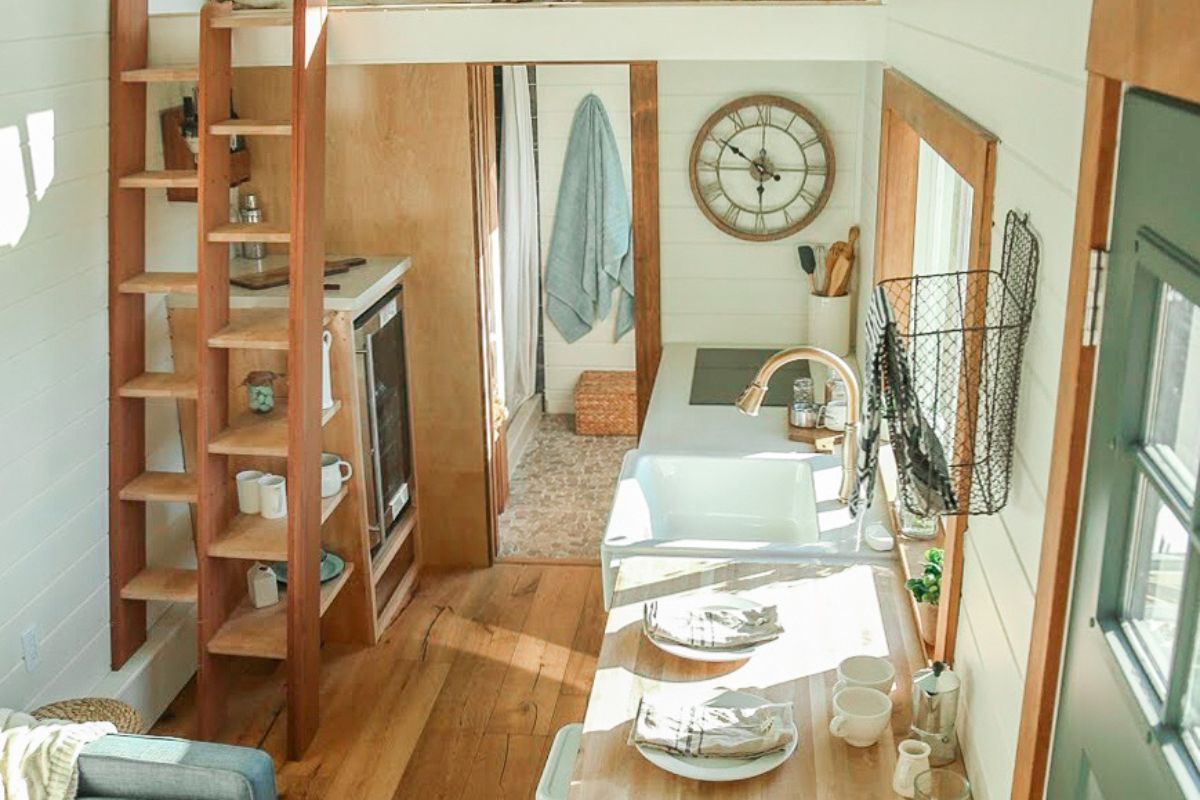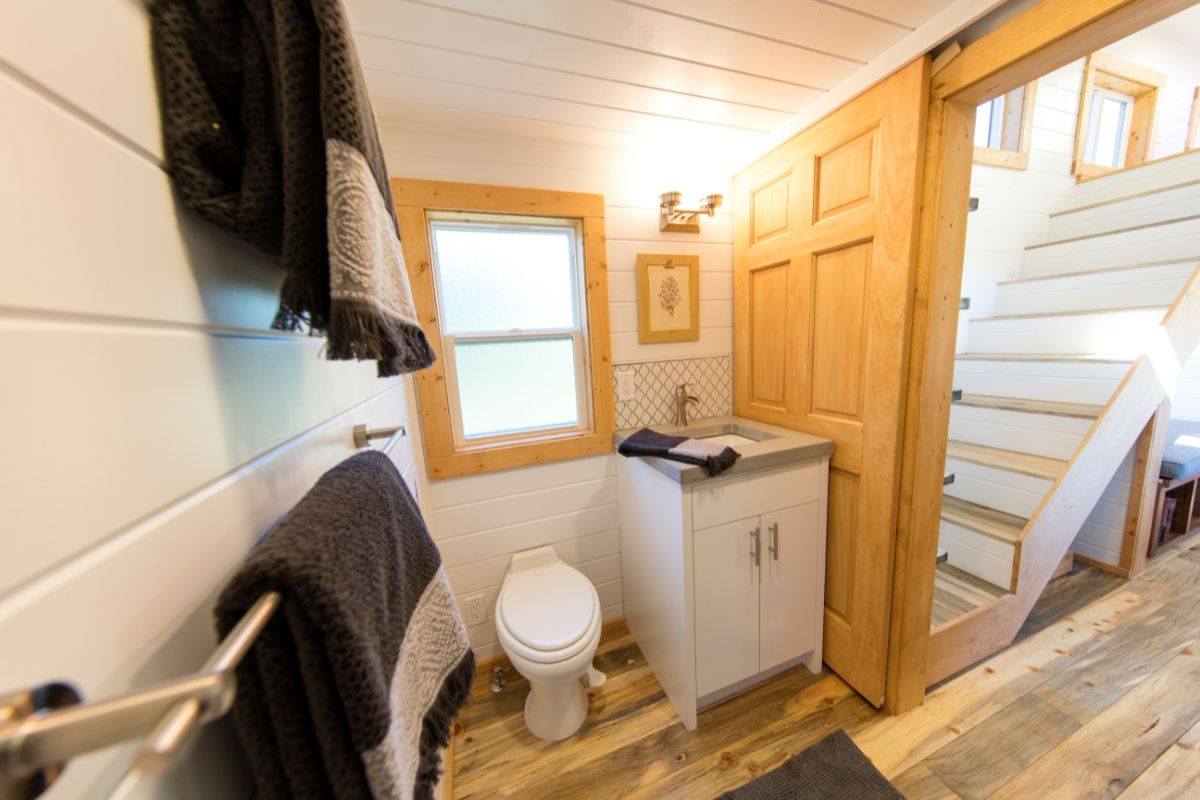If dust were a houseguest, it would be the kind that shows up uninvited, overstays its welcome, and somehow finds its way into every room. From your couch cushions to the books you haven’t opened in months, it settles quietly until a sneeze gives away its hiding place.
What makes it tricky is that dust isn’t just one thing. It’s a cocktail of lint, pet hair, pollen, skin cells, and other tiny particles that can make small spaces feel cramped and air feel heavier than it should.
Living in a compact home means this guest makes itself known even faster. But here’s the good news. A few clever tricks can turn the tables. Stick around, because keeping your small space dust-free is easier than you might think.
7 Tips To Reduce Dust In A Small House
1. Vacuum with a HEPA Filter
A vacuum can be your strongest weapon against dust, but not all machines work the same way. Regular models often pick up visible dirt while sending finer particles right back into the air. That’s where a HEPA filter makes all the difference. Designed to trap pollen, pet dander, and even microscopic dust mites, it helps improve indoor air quality with every pass.
Think about the places dust loves most. Rugs, carpets, and upholstered chairs act like sponges, holding on to particles long after you’ve cleaned the floor. Even curtains can quietly collect dust, especially if you layer them. While it’s tempting to just shake them out, a vacuum with a HEPA filter does a much better job of capturing what you can’t see.
For smaller homes, a lightweight stick vacuum is often easier to maneuver around tight corners and under furniture. Denver Maids explains that dust often lingers along baseboards, behind furniture, and under beds, making these overlooked spots just as important as the surfaces you see every day to maintain a dust-free living space and healthier air quality.
2. Declutter to Eliminate Dust Collectors

The more knick-knacks, piles of mail, and extra furniture you keep, the more surfaces there are for particles to settle on. In a small space, this becomes noticeable almost overnight, turning your home into a dust trap before you realize it.
The easiest fix is to keep things simple. Instead of letting books, papers, or seasonal décor stack up, store them in drawers, cabinets, or sealed storage containers. Open shelving may look appealing, but it can double the cleaning workload. Swapping them for cabinets or even adding glass shutters to shelves can cut dust buildup dramatically while still displaying your favorite pieces.
Living with less clutter has another hidden perk. Cleaning becomes faster and far less frustrating. With fewer surfaces to wipe down, a microfiber dusting cloth can take care of everything in minutes, leaving your small space fresh and easier to maintain.
3. Wash Bedding and Soft Furnishings Frequently
There’s a reason allergy sufferers often blame their bedroom. While hard surfaces gather a visible layer of dust, fabrics hold on to particles in ways you can’t see. Every time you toss a pillow, fold a blanket, or draw the curtains, tiny clouds of dust, pet hair, and skin cells are released back into the air.
The easiest defense is a regular wash cycle. Sheets and pillowcases should go into hot water weekly, while heavier pieces like duvets or comforters can be cleaned less often but still shaken outdoors to remove buildup. Mattresses shouldn’t be ignored either. A quick vacuuming or steam cleaning every few months cuts down on dust mites and keeps your sleep environment healthier.
Outside the bedroom, soft furnishings need equal attention. Curtains, sofa covers, and throw pillows can harbor just as much hidden dust. Rotating them through a wash or cleaning routine not only improves air quality but also keeps your small space feeling fresh instead of heavy.

4. Improve Air Circulation and Filtration
Ever notice how a sunbeam cutting through your window makes every floating dust particle visible? That’s proof of what lingers in the air when circulation is poor. In smaller homes, where windows and vents are limited, these particles don’t have anywhere to go, which means they eventually settle on furniture, bedding, and floors.
Creating movement in the air changes that story. An air purifier with a HEPA filter captures much of what you can’t see, from pollen to pet dander, before it lands on your shelves. Replacing HVAC filters every one to three months keeps your system from recycling dust back into the room.
And on days when the outdoor air is clear, even something as simple as opening a window or running a ceiling fan helps break up stagnant air. Better airflow not only makes your space feel fresher, but it also slows down how quickly dust takes over.
5. Wipe Surfaces with Microfiber Cloths
Not every cleaning tool is as helpful as it looks. Feather dusters, for example, are great at one thing—sending particles back into the air so they can settle again on the very same surfaces. That’s why many people feel like they’re dusting nonstop without seeing lasting results.
Microfiber cloths flip that script. The tiny fibers act like magnets, trapping dust instead of pushing it around. With just a few minutes of wiping each week, shelves, countertops, and baseboards actually stay cleaner instead of looking polished for only a few hours.
Technology also benefits from this switch. Screens and keyboards attract dust quickly, and wiping them with the wrong cloth often makes smudges worse. Anti-static microfiber cloths are designed for electronics, leaving your laptop or TV screen clear without streaks.
6. Tackle Hidden Dust Zones
If you’ve ever moved a nightstand or pulled out the fridge only to find a layer of dust thick enough to write your name in, you’re not alone. These forgotten corners quietly gather debris for months, sometimes years, without anyone noticing. In a compact home, those piles don’t just stay hidden. They influence the air you breathe every day.
Reaching those spaces doesn’t always mean deep cleaning for hours. Sliding a bed a few inches to vacuum underneath or wiping window sills as part of your weekly routine can make a big difference. Even light fixtures and ceiling corners, places most people never think about, can hold layers of dust that eventually find their way back onto freshly cleaned surfaces.
Rotating furniture and checking vents from time to time ensures these zones don’t turn into dust reservoirs. Once you start including them in your regular routine, the rest of your home stays clean longer.
7. Maintain Floors Daily


Dust has a habit of settling low first, which means the floor is always its favorite landing spot. In houses, where every bit of space is used constantly, even a light layer can make the room feel untidy. That’s why tending to floors daily is less about perfection and more about stopping dust before it spreads upward to furniture and fabrics.
A quick sweep or short vacuum session is usually enough to keep things manageable. Adding a damp mop once a week helps capture the finer particles that brooms can’t reach. Rugs should also be part of the routine since they gather dust faster than you might realize. Shaking them outdoors or giving them a quick vacuum keeps them from releasing particles back into the air.
By treating the floor as your first line of defense, you’ll notice the rest of the house stays cleaner with less effort, giving you more time to enjoy the space instead of chasing dust around.
Conclusion
Dust has a way of testing patience, especially when every corner of a small home puts it on display. The good news is that control does not require dramatic effort. Simple habits such as vacuuming with the right filter, washing bedding often, and keeping clutter low stop buildup before it takes over. Adding an air purifier or letting in fresh air on clear days makes an even bigger impact.
When these steps become part of your weekly rhythm, dust loses its hold and your space feels fresher, healthier, and much easier to enjoy every single day.






Share: